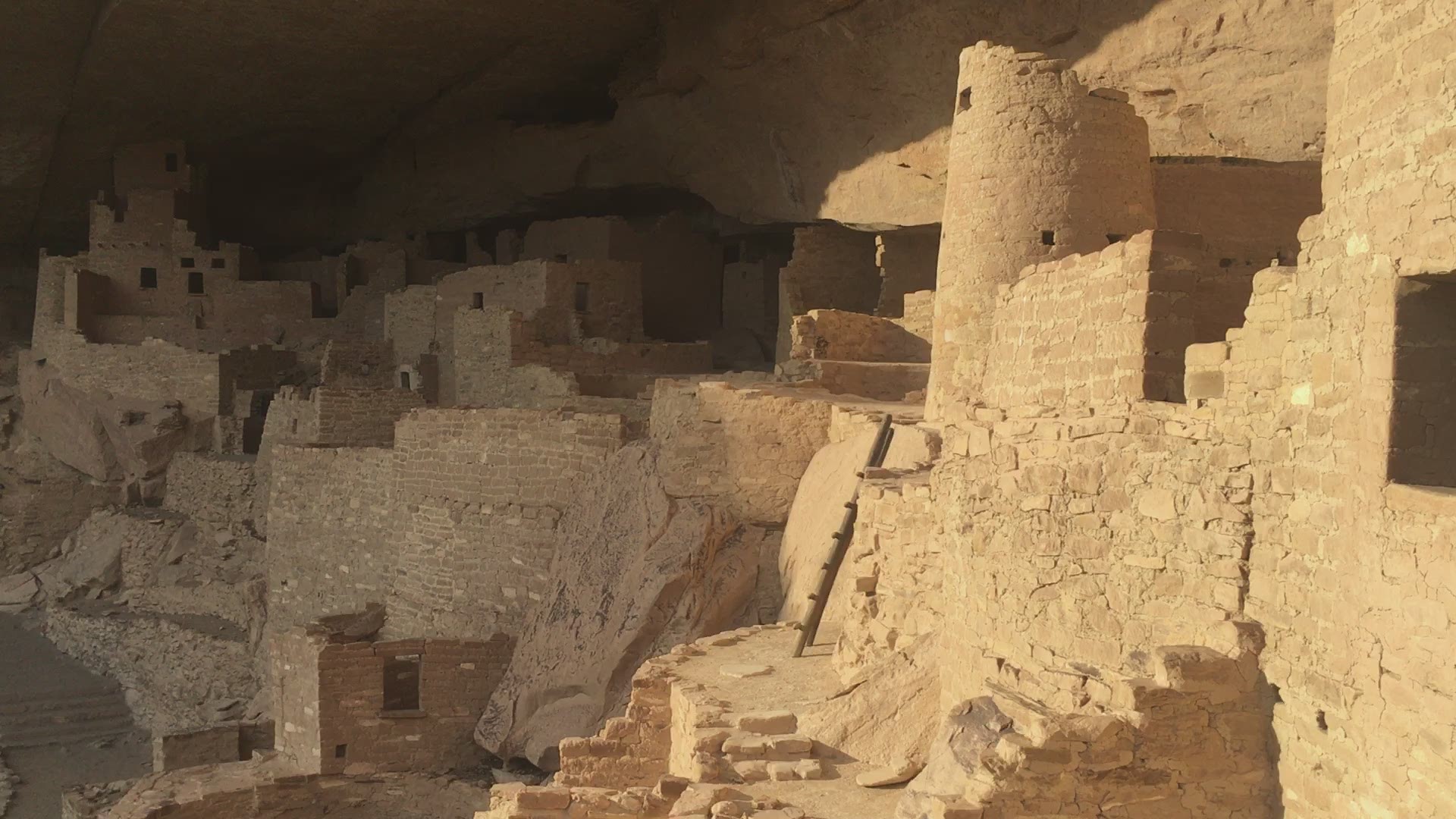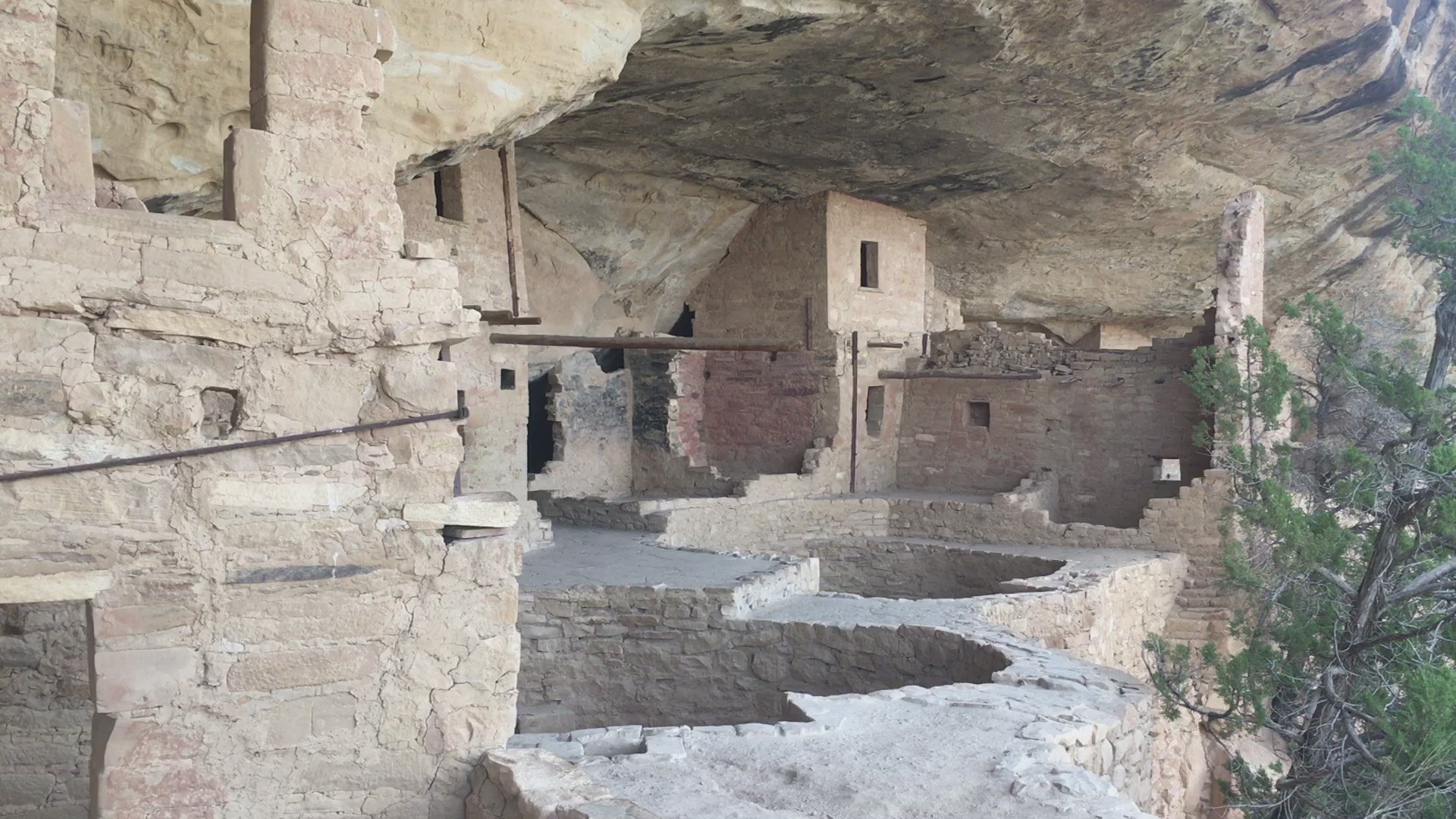MESA VERDE NATIONAL PARK, Colo. — Tucked into alcoves on the sides of cliffs in southwestern Colorado are dwellings that stood for centuries.
Mesa Verde used to be home to the Ancestral Pueblo people more than 700 years ago, from 600 to 1300 C.E.
Mesa Verde became a national park in 1906 and has nearly 5,000 known archaeological sites, including 600 cliff dwellings.
While the dwellings have slowly revealed some of their secrets, much of the site remains a mystery.

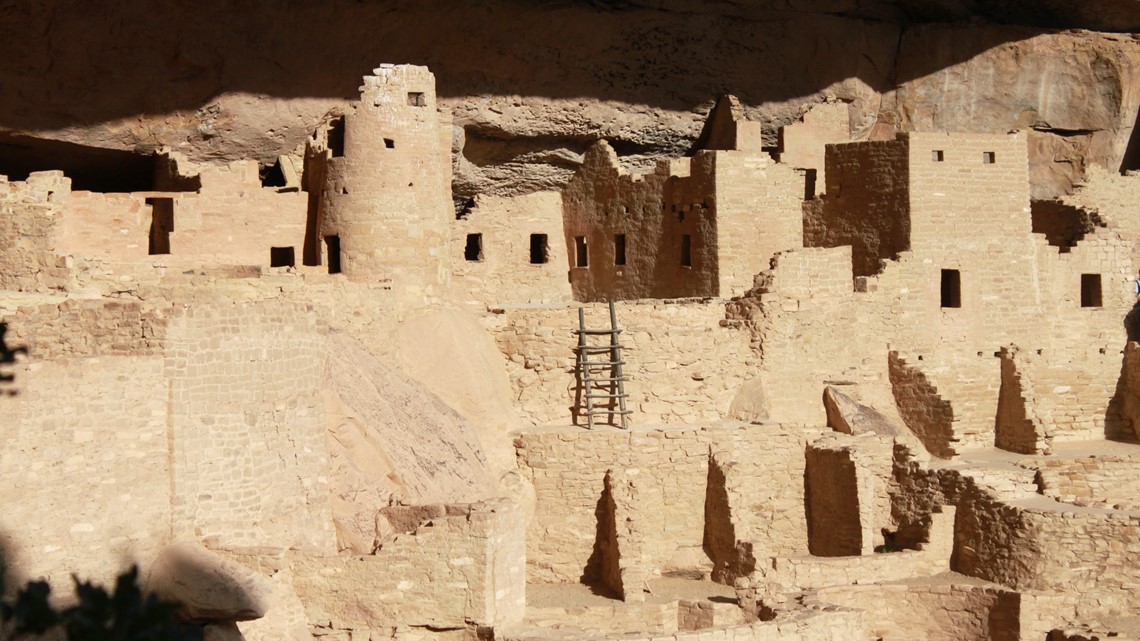
Tours of the site take visitors down steep staircases and up and down ladders. Several of the park's main archaeological sites are located more than 20 miles from the entrance near the town of Mancos.
Click around the video below for a 360-degree view of Cliff Palace, Balcony House and Step House, all located at the site.
Things to know before planning a Mesa Verde trip
- Near Cortez, in southwestern Colorado
- 7-hour, 360-mile drive from Denver
- Far View Lodge (lodging inside the park) open late April through late October
- Camping available mid-May to mid-October
- Tickets for tours must be purchased at the visitor center
- Any defacing, destruction or removal of any object of antiquity in the park carries fines up to $100,000 and imprisonment up to 20 years

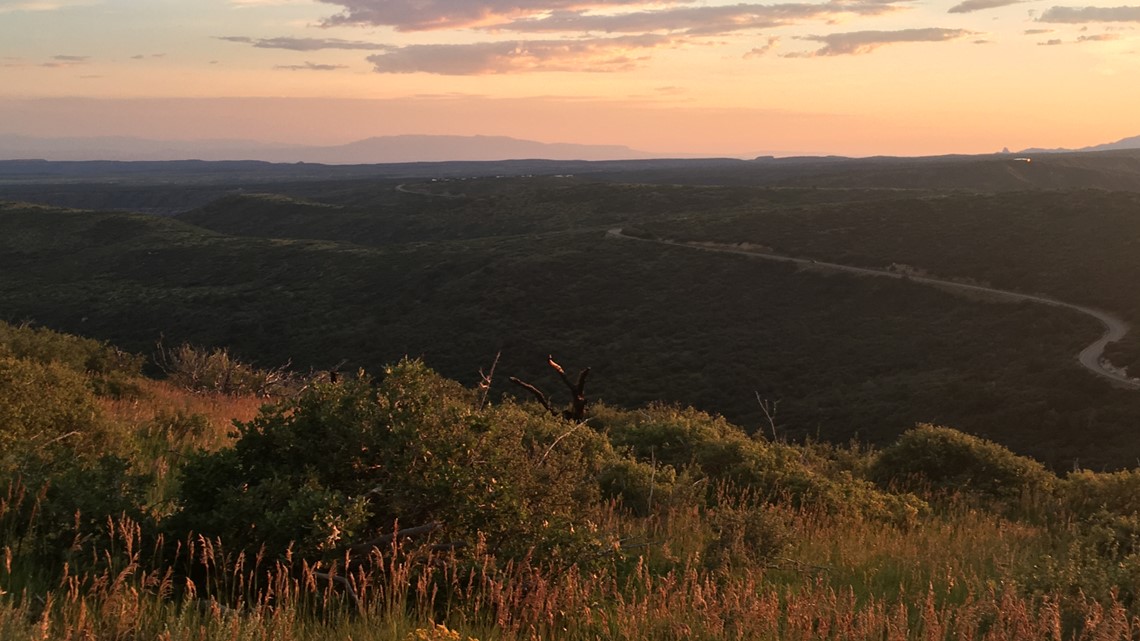
Cliff Palace
Cliff Palace, the largest cliff dwelling in all of North America, is considered the crown jewel of Mesa Verde.
Visitors start their tour from a spot just above and to the side of Cliff Palace. The entire tour of Cliff Palace is a walking distance of about a quarter mile.
The trip into the complex and back to the parking lot involves 120 uneven stone steps and climbing five small ladders on a 100-foot vertical climb.
Towers, rooms and plazas rise several stories to fill this area. Construction started as early as 1190, although the main building phase of Cliff Palace lasted from 1260 to 1280.
About 150 rooms and 75 open spaces were built during that time.
The entire alcove is about 215 feet wide, 90 feet deep, and 60 feet high. Researchers believe 100 to 120 people may have lived here centuries ago. It might have been used as an important community center for the larger villages.
There are nine rooms at the top of Cliff Palace, including two different types of storage rooms.
People used tall, wooden ladders to reach their food supplies.
Some of the rooms have the original wood, which researchers used to determine when Cliff Palace was built.

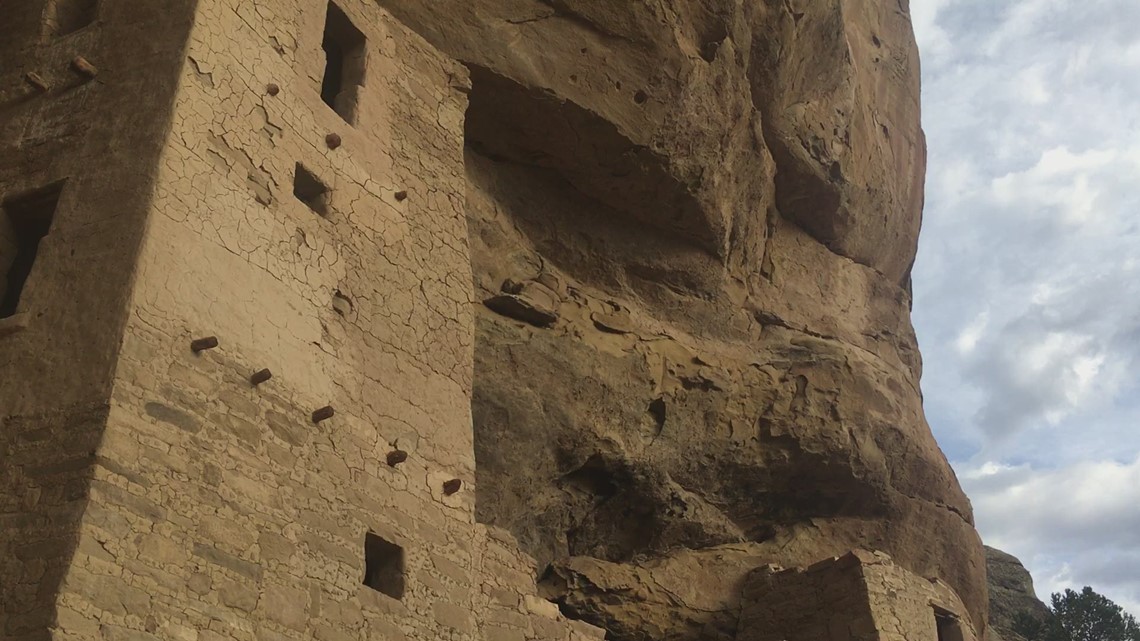
One of the walls inside a tower at Cliff Palace has a painting from the original inhabitants, a rarity as paintings and drawings are not common at the site. Its meaning and symbolism, like much of the site, are still unknown.


Balcony House
About 1/2 mile away from Cliff Palace is Balcony House.
The structure got its name for having the best preserved balcony of any dwelling at the park. The Balcony House tour is described as "intimate and adventurous."
Tours last about 1 hour and start from directly above the site.
Visitors first descend a 100-foot staircase into the canyon before climbing a 32-foot ladder. Visitors will also crawl through a 12-foot, 18-inch-wide tunnel before climbing an additional 60 feet on ladders and stone steps to get back to the parking lot.

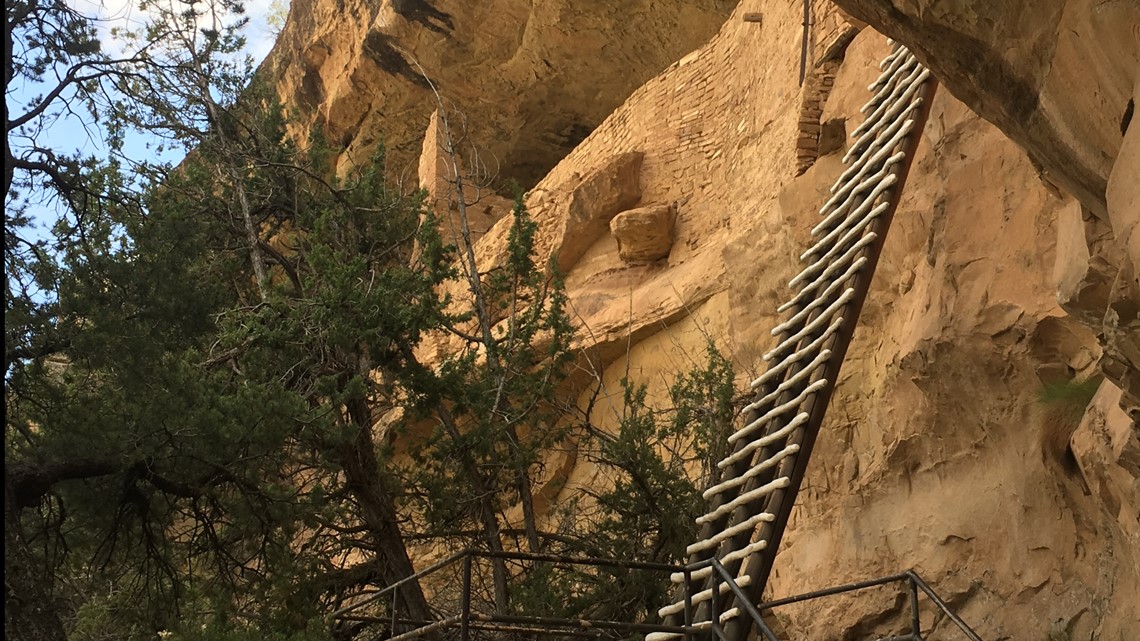
Balcony House is in an area that is nearly 20 feet high, 40 feet deep, and 264 feet long. Built in phases between 1180 and 1270, the complex sits right on the edge of a 600-foot drop to the canyon floor.


Behind the buildings, water seeps through the rock to form a spring. This is where people living in most of these dwellings got their drinking water.

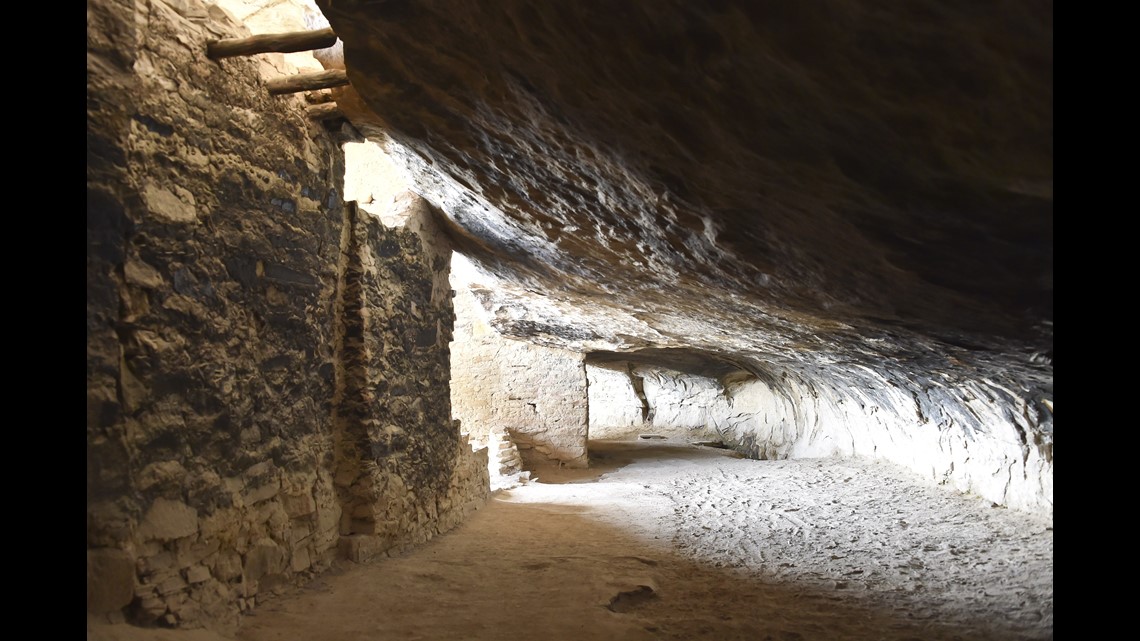
Features here include signs of fire and 13th Century remodeling. The stone in one of the rooms has a reddish tone. The type of materials used for building turn red during a fire, leading researchers to believe there was a dangerous situation in that room a long time ago.

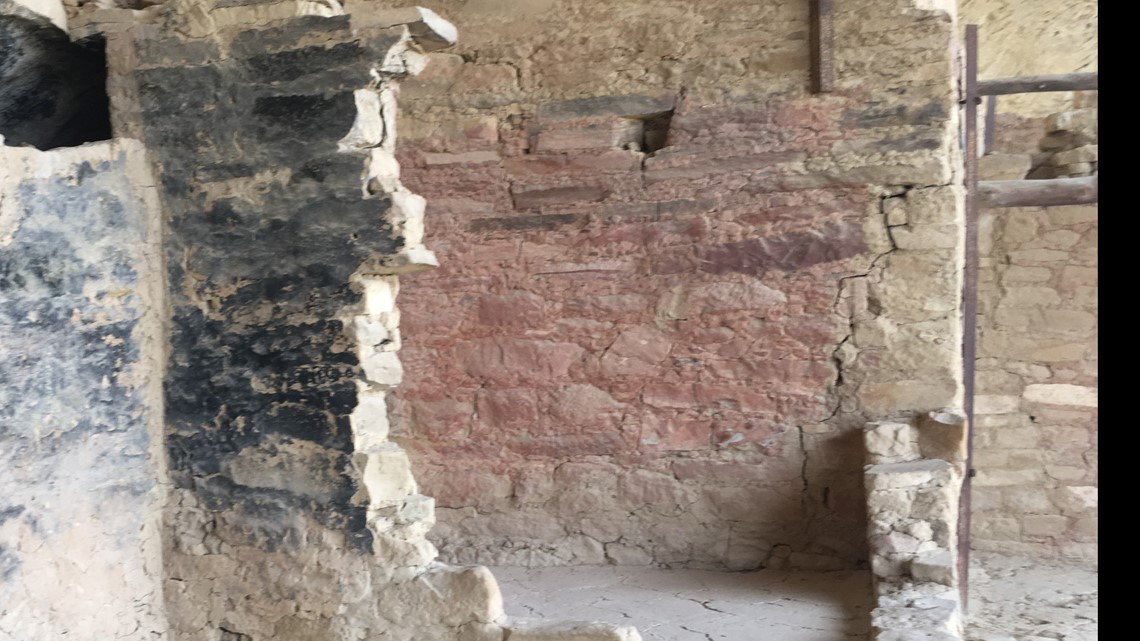
There is also a door that led from one side of Balcony House to the other. At some point when people lived there, the door was sealed shut — another mystery to the dwellings.

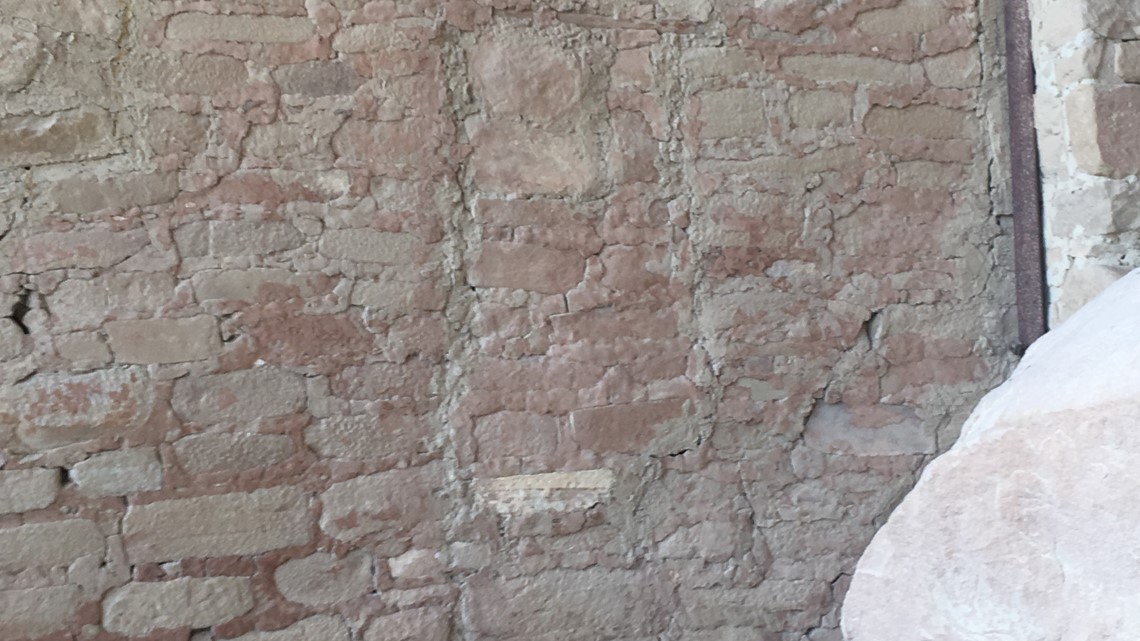
Step House
Step House gives visitors the ability to explore Mesa Verde on their own.
It is located several miles from Cliff Palace and Balcony House in an area called Wetherill Mesa.

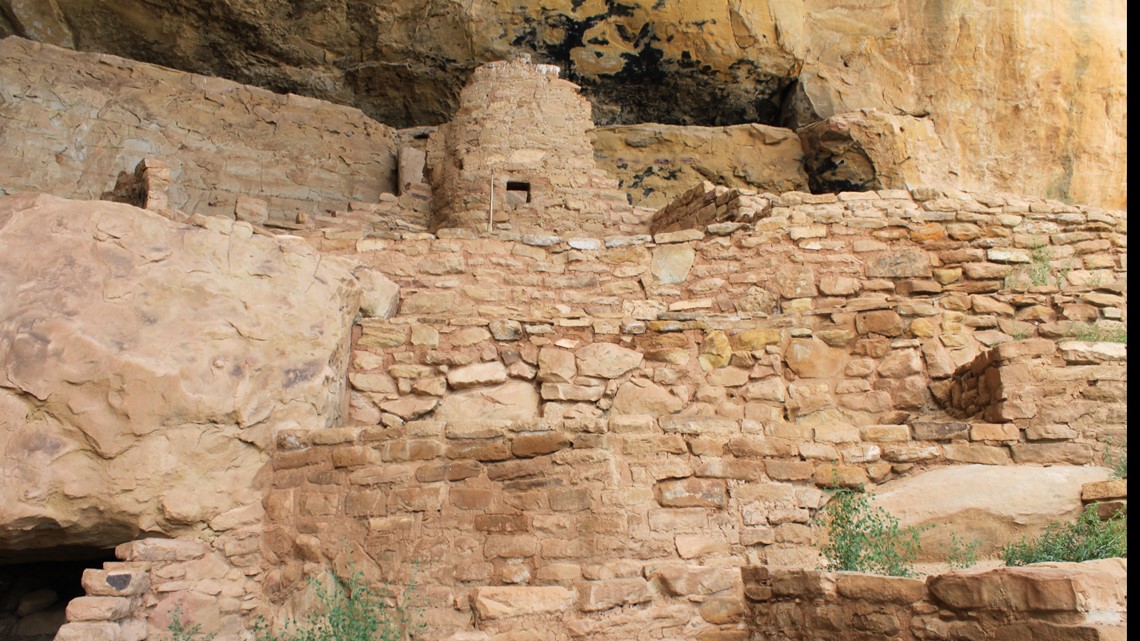
Visitors can drive to this area before going on a steep, 1-mile hike to access it.
This area shows the recreation of a pit house. From the years 550 to 750, people dug into the ground, then placed timbers to support a roof. The pit houses had a fire pit with an air deflector to help circulate the air around the room.

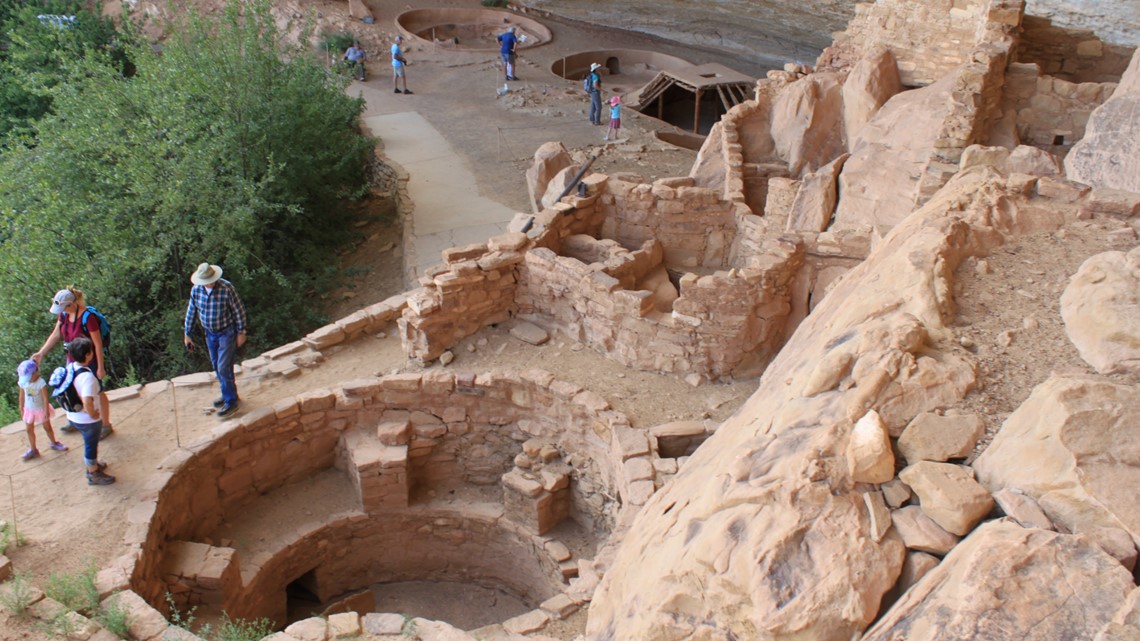
Step House rises several stories with different levels throughout the alcove. A petroglyph — or ancient drawing — can be found at this location, too.

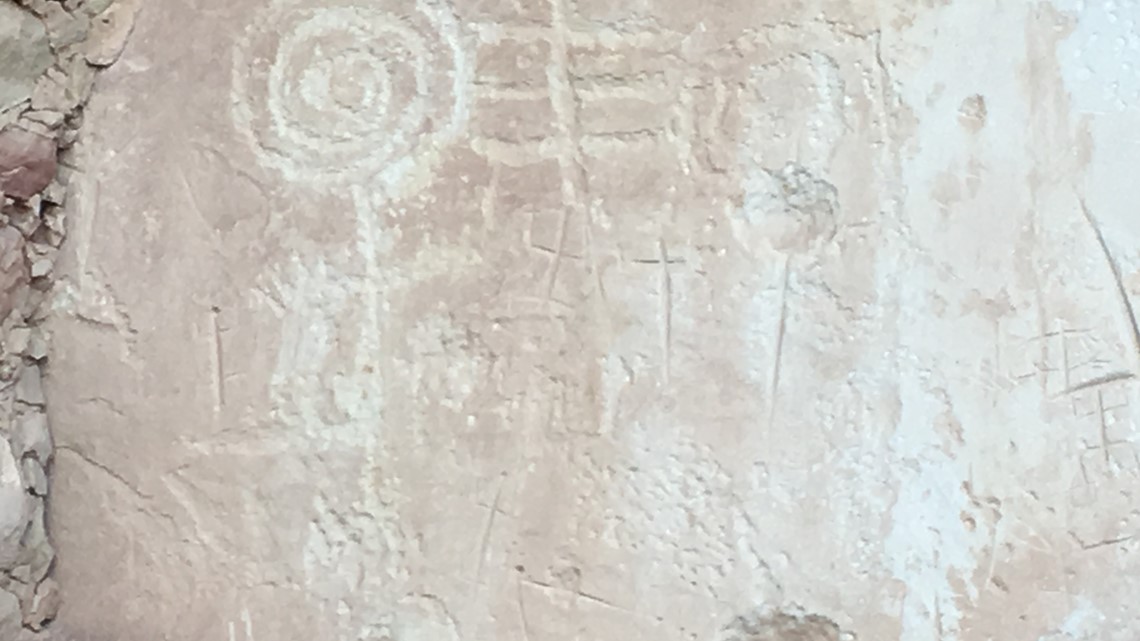
Spruce Tree House
One of Mesa Verde's most fascinating locations can only be viewed from a distance.
In 2015, Spruce Tree House had to be closed to visitors due to rocks falling from the cliff above the dwelling.

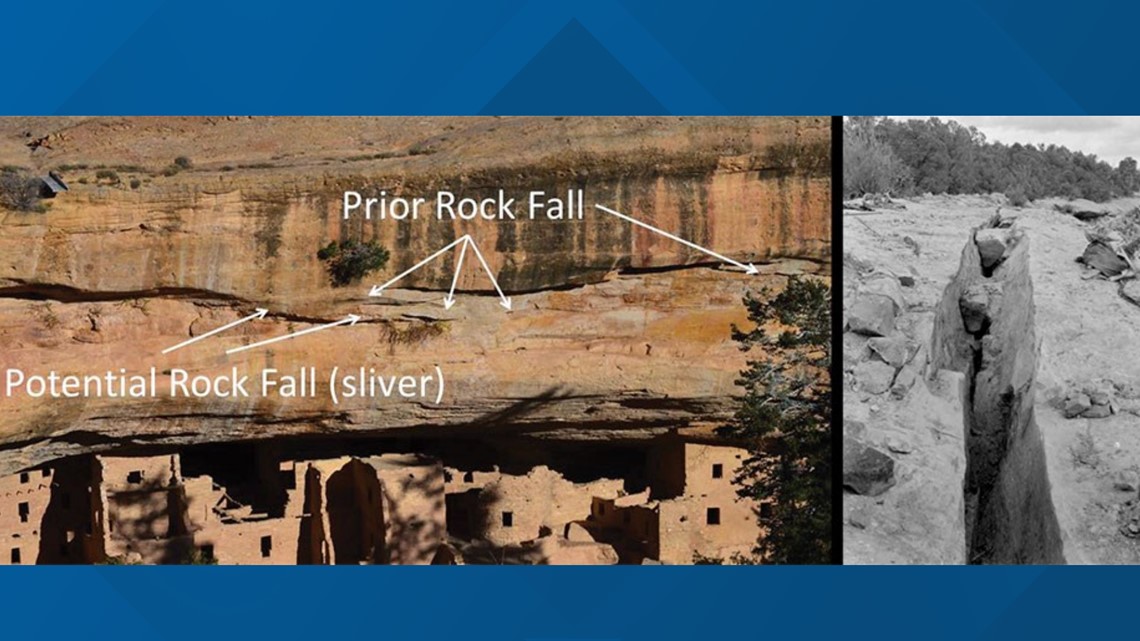
For now, the park's third largest and most well-preserved dwelling remains off limits. A view of this site is still available from the Chapin Mesa Visitors Center.
Spruce Tree House got its name after two ranchers that rediscovered the site in 1888 found a Douglas Spruce (later called a Douglas Fir) tree growing from in front of the site to the top of the mesa above it. According to the story, the men climbed down this tree to enter the complex.
That tree was later cut down by another explorer.

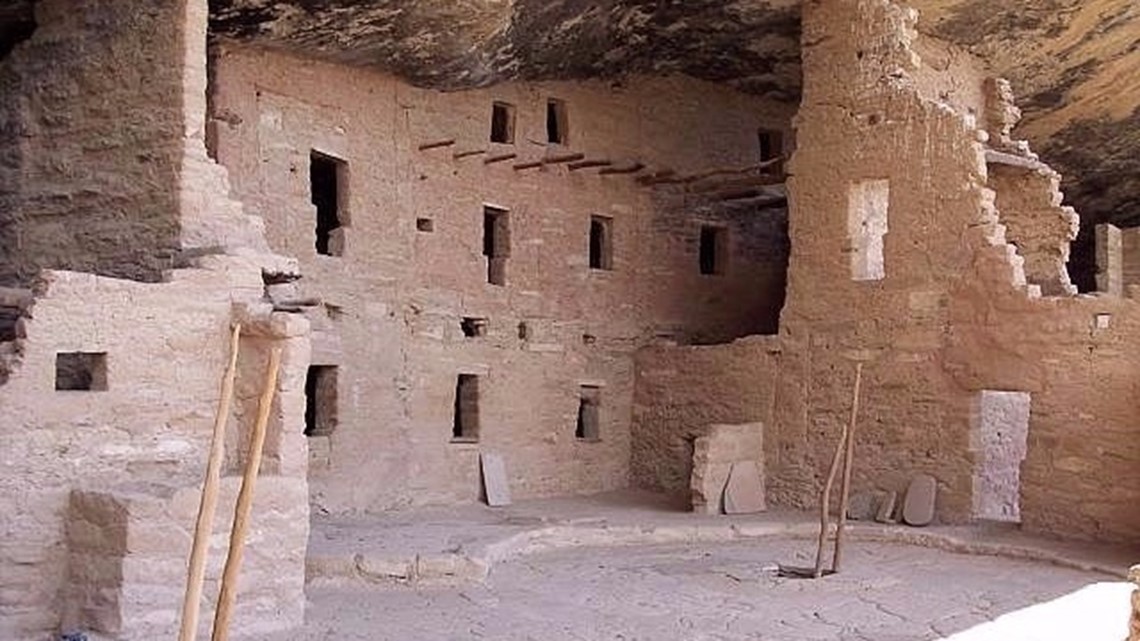
SUGGESTED VIDEOS | Feature stories from 9NEWS

